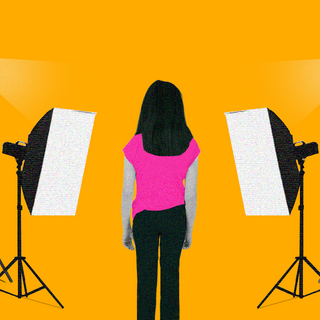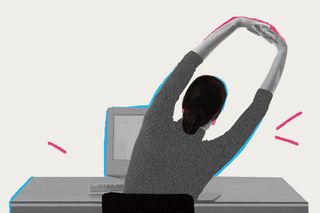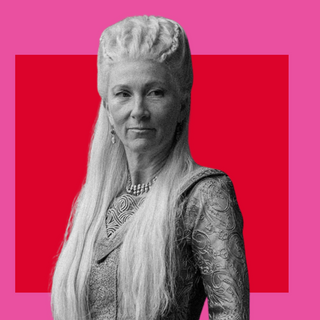
Taking 10‑Minute ‘Micro‑Breaks’ Helps Prevent Burnout, Shows Study
A meta-analysis of 22 studies shows micro-breaks of people walking around or watching something help to reduce fatigue.

In the workplace, breaks carry a notorious charm. The person pursuing a deliberate moment of respite risks being seen as lousy, unproductive, or slow — all adjectives that threaten to deflate our productivity bubbles. But there may be some merit in engaging in tiny work breaks in between tasks: grabbing a snack, going for a walk, watching a video, or other activities associated with some form of recovery for a period of 10 minutes or less. They help reduce fatigue among people, according to new research.
Researchers at the West University of Timișoara, Romania, examined almost 22 studies published over the past three decades to piece together a puzzle of work and productivity. Their meta-review, published in PLOS Oneon Wednesday, showed that there is a link between short breaks improving workers’ well-being. Here, well-being was defined by the person’s ability to complete tasks by the end of the day without feeling a dip in their energy.
This is the science of “micro-breaks,” which endeavors to legitimize the cultural movement of rest and leisure inside the office. The review not only acknowledges that energy during a day is an exhaustible resource, but also helps challenge the guilt many people may face about taking a 10-minute nap during the work day.
“It seemed quite unintuitive to have a full week and to wait for the weekend just to feel better, or have a hard day at the office and to count the hours till the evening,” said study author Irina Macsinga, an associate professor of psychology. Recovery is referred to as an exercise neatly detached from work; its time and space never intersect with labor.
Moments of respite at work are a contested use of time, but our current approach has proven to be untenable. Work trends over the last few years show that people are working longer and also experiencing burnout— induced by the pandemic and otherwise — unlike ever before. Conversations on rest and leisure have picked up tepidly, only for the pendulum to swing back and have people feeling guilty about not optimizing their “downtime.” This is a crisis of both debilitating exhaustion and unattainable recovery.
The current analysis then calls for reasonable inclusion of recovery during the workday. Macsigna and their team looked at a range of experiments: work simulations of students in a laboratory setting, real work-related tasks done by employees, and non-work-related cognitive tests. The geographical scope included literature from the U.S., Netherlands, Germany, Australia, Brazil, China, Austria, and Japan. The kind of work breaks people took included physical activities — like going for a walk, watching a video, or even just relaxing without a clear agenda.
Related on The Swaddle:
Why Second‑Wave WFH Burnout Feels So Different From Regular Work Stress
But what people do duringtheir work breaks matters, too. For instance, when the micro-break involved any activity related to work, like speaking to a colleague too, “work-related micro-break activities were associated with decreased wellbeing, decreased sleep quality, and increased negative mood,” the study noted. On the other hand, walking around or mentally tapping out from work tasks had a positive effect.
While the said micro-breaks helped usher in a feeling of rejuvenation, there wasn’t a direct impact on people’s performance. This observation also varied according to the kind of work people participated in too. For those engaged in creative or clerical tasks (such as writing or data keeping), longer breaks were indeed linked to better performance at work. This correspondswith research on how work breaks help people in retaining information and bemore creative. The brain operates in two modes: the “focused mode” when we’re tangibly doing things and the “diffuse mode,” which refers to a more relaxed state of functioning. Research has found that thediffused mode plays a role in determining how productive we are too; daydreaming in and of itself “can allow the brain to hook up and return valuable insights,” explained engineering professor Barbara Oakleypreviously.
“A meta-regression showed that the longer the break, the greater the boost was on performance,” the authors wrote. “Overall, the data support the role of micro-breaks for wellbeing, while for performance, recovering from highly depleting tasks may need more than 10-minute breaks.” Put simply, there is no one-sit-fits-all approach to be taken here. Professions are different, just like the people breathing life into them.
For those who undertook more cognitively demanding tasks, however, the breaks didn’t directly translate into better, quantifiable performance. Arguably, in the discourse of labor and recovery, that should be okay too; the sense of vigor does not always have to materialize into measured aspects of productivity.
People can take a break without having to account for that emotional time away. Addressing the guilt that comes with taking breaks is a necessary component of this discourse. “The environment should be one in which employees feel that they can take micro-breaks without being questioned and without having to feel guilty for doing so,” according to Katie Moore, a licensed clinical psychologist who wasn’t involved in the review.
There are some limitations to the present review, for it relies on self-reported forms of wellbeing instead of objectively tracking how relieved or less fatigued people felt. Future research exploring the intersection of work and leisure can perhaps address this gap.
But Moore adds that “in general, employees benefit from taking regular breaks between tasks” and they “show less fatigue and greater energy and enthusiasm after taking micro-breaks.”
The analysis reaffirms what the pandemic years are teaching us in the stark display: that willpower and motivation are exhaustible resources. The rhythm of a work day falls and climbs with ravishing uncertainty. What carries some certitude, though, is that breaks do function as battery packs to help with fatigue.
Saumya Kalia is an Associate Editor at The Swaddle. Her journalism and writing explore issues of social justice, digital sub-cultures, media ecosystem, literature, and memory as they cut across socio-cultural periods. You can reach her at @Saumya_Kalia.
Related


‘House of the Dragon’ Undermines the Centrality of Women in Narratives About Power
